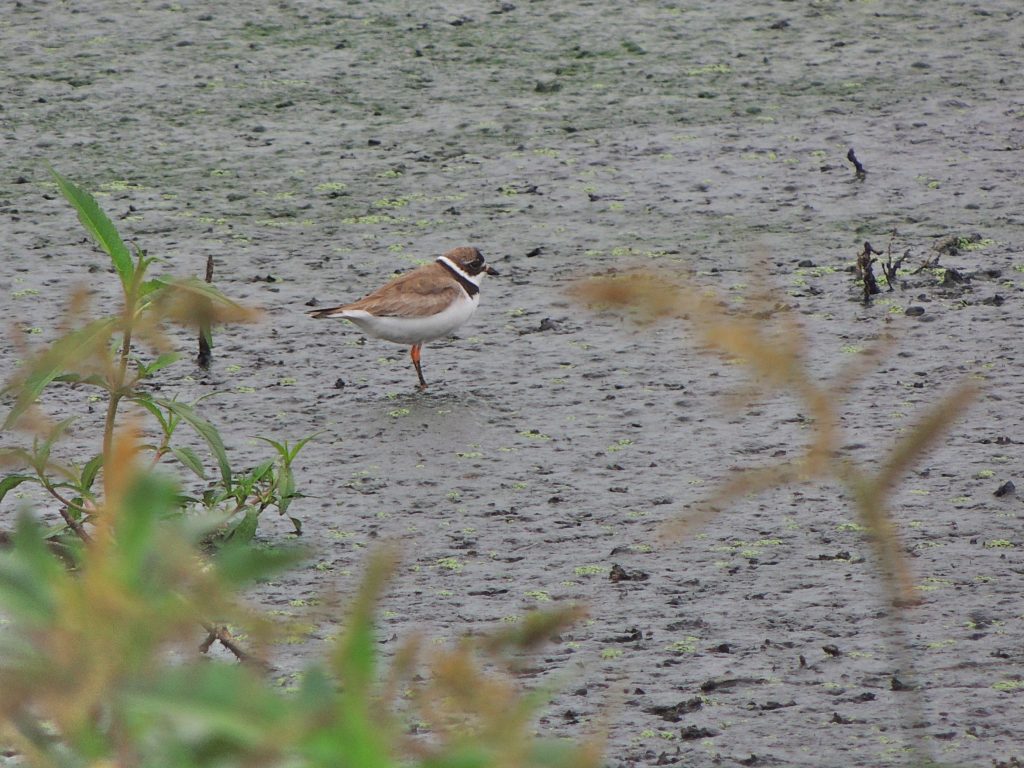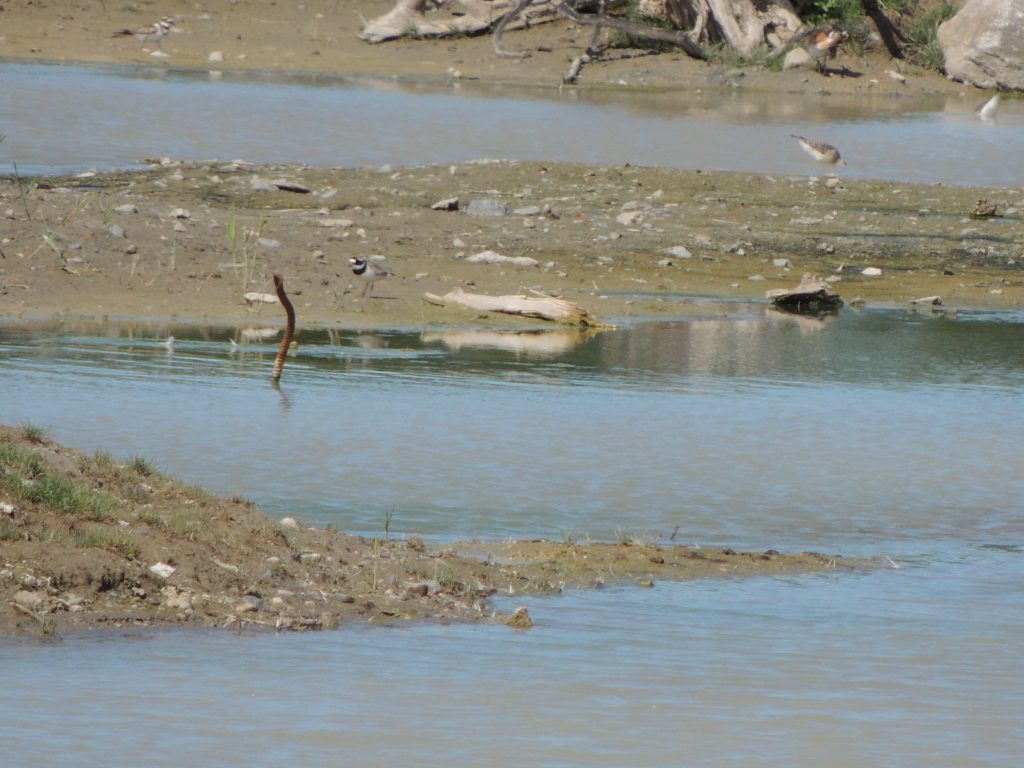August 21, 2016. Leslie Street Spit, Toronto ON. I took the bait to go and chase a rare species today. That’s twice in a little over a month: in July it was for Black-bellied Whistling Ducks, today for a Common Ringed Plover. I wasn’t all that excited about the plover since I’d seen some a few years ago in England, but a gentle arm-twisting got me out of the house despite a bit of weariness lingering from a long late-night drive.
Common Ringed Plovers are, as their name suggests, very common, just not here. They are a Eurasian species that looks very much like our Semi-palmated Plover, shown in the photos below (and a Killdeer for comparison and scale). Semi-palmated Plovers are frequent passage migrants on their way to overwinter along the shores of the Atlantic and Caribbean.


Several dozen gregarious birders and I gathered in a knot watching the Ringed Plover about a hundred meters distant. It’s a small bird and was hard to make out as it skittered around socializing with Least Sandpipers, Killdeers and the odd yellowlegs. I’m a little embarrassed to admit that I didn’t pay a lot of attention to the other shorebirds, and I’m not sure anyone else did either; I suppose we were too distracted by this Bird of the Day.
Ringed Plovers nest across the northern-most reaches of Eurasia, on the coast of Greenland and on the far reaches of Canada’s Baffin Island; they winter in Africa. It makes sense to assume that today’s Ringed Plover was a Baffin Island nester that has made a gross navigational error and finds itself some 90 degrees off course. I took many photos, mostly for the record, but a strong wind and the distance involved made for a large batch of ‘deletes’. The one below is barely good enough to include (try clicking on the photo to enlarge it) but you’ll get the general idea from the Semi-palmated Plovers pictures above.

The setting for this gathering to examine a wandering bird-turned-extreme-rarity was a long spit of reclaimed land anchored at its east end to a corner of Toronto’s old industrial heartland and reaching out into Lake Ontario. The Spit, as it’s known, continues to grow as construction debris and excavated sub-soils arrive. As the trucks leave so trees and grasses take root making it a very green and leafy place popular with runners, cyclists and birders. It is a natural shoreline conduit for migrating birds and we noted many Eastern Kingbirds, Tree Swallows and Barn Swallows making their way heading south and west, and there was a brief flurry of excitement among the smaller birds as a Sharp-shinned Hawk cruised overhead, I half expected the Ringed Plover to fly away never to be seen again; but it stayed, making a day-long parade of birders happy.
